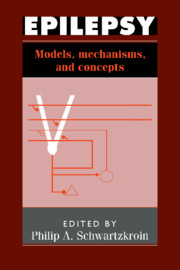General introduction
Published online by Cambridge University Press: 03 May 2010
Summary
Concepts and models
There is little doubt that advances in epilepsy research are occurring at a rapid rate. For those of us who are interested in understanding the mechanisms underlying epileptiform activities – whether because of a basic interest in how the brain works, or driven by a concern for more effective treatments for the epilepsies – progress in the laboratory has been almost bewildering. It seems that in each new issue of each neuroscience publication there are new insights and possibilities that we must integrate into our old frameworks. Much of the ‘progress’ has been propelled by advances in technology. For example, at the electrophysiological level, new recording techniques such as patch-clamping have allowed investigators to gain much greater detailed understanding of singlecell properties. New antibodies and tract-tracing techniques have provided information about specific cell populations and about plasticity in neuronal interconnections. Molecular neurobiology is beginning to make a considerable impact on epilepsy research, providing techniques for studying the genetics of inherited epilepsies, as well as for examining the structure and expression of channels and receptors. Pharmacological and neurochemical methods now provide highly sensitive means for analyzing receptor populations, and for assaying transmitter systems (e.g., with microdialysis).
- Type
- Chapter
- Information
- EpilepsyModels, Mechanisms and Concepts, pp. 1 - 18Publisher: Cambridge University PressPrint publication year: 1993
- 3
- Cited by

